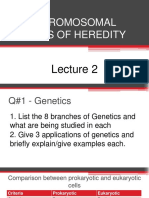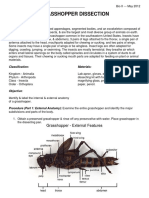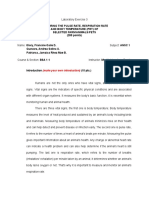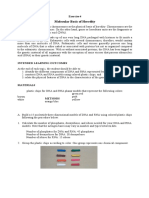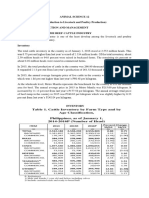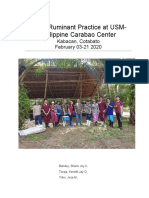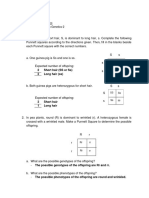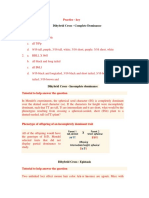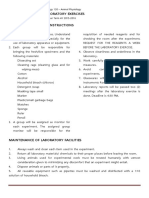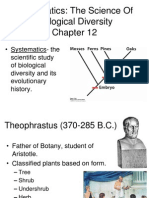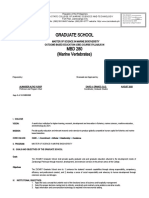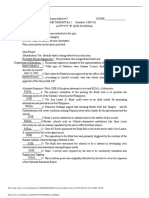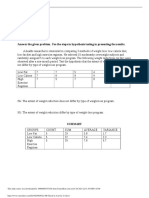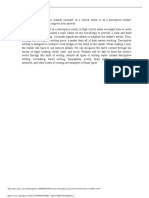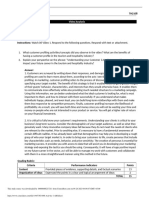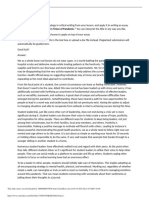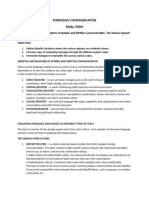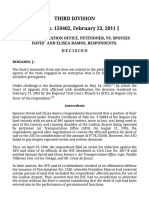LABORATORY EXERCISES IN GENETICS
Name _____________________________
SERWELAS, SHAMIL B. Laboratory Instructor _____________
Sir Stephen Capilitan
DENT-1B
Course/Year/Sec ___________________ January 23, 2021
Date ___________________________
Activity Sheet 2
HUMAN GENETIC VARIATIONS
A. Table 1 -Trait Inventory Table
1. Describe the following observed traits in your group.
Mother Father Sister
Trait Yours
Shape of face Inverted Oval Round Oval
Triangle
Hair color Dark Brown
Black Black Black
Eye color Brown
Black Black Black
Mesomorph
Body built Endomorph Endomorph Endomorph
11
This study source was downloaded by 100000862891039 from CourseHero.com on 02-27-2023 06:13:14 GMT -06:00
https://www.coursehero.com/file/91697714/SERWELAS-Lab-Exercise-2-2pdf/
� LABORATORY EXERCISES IN GENETICS
2. Determine if the group members are “with or without” the following traits.
Trait You Mother Father Sister
Dimple With Without Without With
Mid-digital Without Without Without Without
hair
Widow’s peak Without Without Without Without
3. Draw to show your differences in the following traits.
Trait Yours Mother Father Sister
Shape of
earlobe
Thumb’s
backward
bendability
Length of 2nd
toe in relation
with the 1st toe
12
This study source was downloaded by 100000862891039 from CourseHero.com on 02-27-2023 06:13:14 GMT -06:00
https://www.coursehero.com/file/91697714/SERWELAS-Lab-Exercise-2-2pdf/
� LABORATORY EXERCISES IN GENETICS
D. Table 4 – Types of Variations in Human
Morphological Physiological Behavioral Sexual
Shape of face Heart rate Intelligence Quotient External
(IQ) Reproductive Organs
Hair color Blood pressure Mental retardation Internal Reproductive
Organs
Eye color Body temperature Tolerance level Male – lower voice,
more muscles and
body hair
Body built Ability to digest food Emotional Quotient Female- breast, wider
(EQ) hips
Eye shape Color Blindness Instinct Sex chromosomes
V. Questions
1. Give at least 3 species characteristics of human beings.
Human beings' species characteristics include walking upright or the
upright posture, speech or the ability to articulate words and speak, and the
human brain, which is relatively greater than other species in terms of size and
capacity.
2. What are “phenocopies”? Give at least three (3) specific examples.
Phenocopy is a trait that seems to be inherited but is actually caused by the
environment. It mimics the effects of a mutation in a gene and may have symptoms
that resemble an inherited trait.
Examples:
1. Rubella in pregnant women - can cause congenital disabilities such as
deafness, which is the most common and mimics the inherited forms of
deafness.
2. AIDS- this virus can be passed from the mother to child, looking like it is
inherited.
3. Curling of Straight Hair
13
This study source was downloaded by 100000862891039 from CourseHero.com on 02-27-2023 06:13:14 GMT -06:00
https://www.coursehero.com/file/91697714/SERWELAS-Lab-Exercise-2-2pdf/
� LABORATORY EXERCISES IN GENETICS
3. Which do you think is the most important type of variation? Why?
From my standpoint, the most important type of variation out of the four is
sexual variation since it encompasses the most important phenotypic
characteristics, the sexual trait of an organism. Sexual variation enables sexual
reproduction between individuals, thus combing two individuals' genetic material
and producing a new genetically-diverse organism. With this, it guarantees the
continuation of similar kinds of individual, generation after generation, and trait
variation.
4. Differentiate continuous from discontinuous trait. Give at least two (2)
examples each.
A continuous trait is a type of variation with no distinct categories into which
an individual can be placed. There are small differences between the
characteristics of individuals. It is controlled by a large number of genes for the
determination of a particular trait. Examples of this include the organism’s height
and weight.
Discontinuous trait, on the other hand, has distinct categories into which an
individual can be positioned. Only one or few genes are present to determine a
particular trait in a discontinuous variation. Blood groups, fingerprints, and tongue
rolling are examples of this type of variation.
14
This study source was downloaded by 100000862891039 from CourseHero.com on 02-27-2023 06:13:14 GMT -06:00
https://www.coursehero.com/file/91697714/SERWELAS-Lab-Exercise-2-2pdf/
Powered by TCPDF (www.tcpdf.org)






